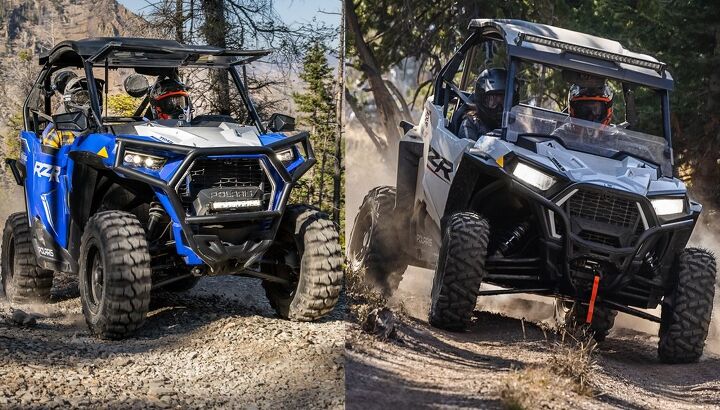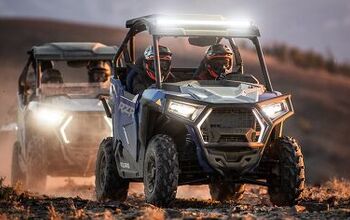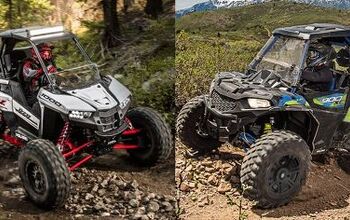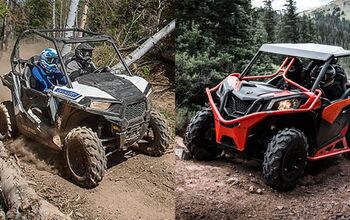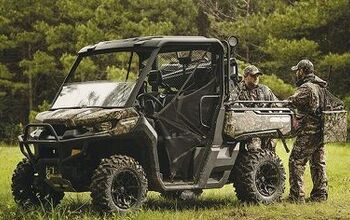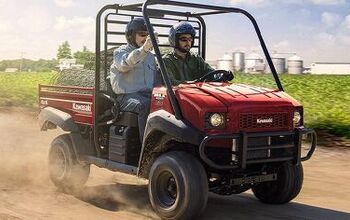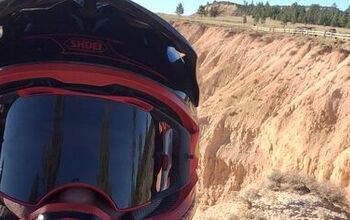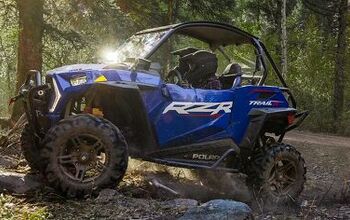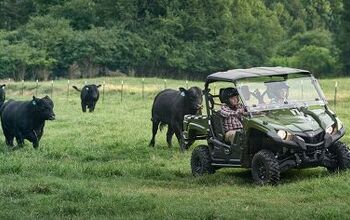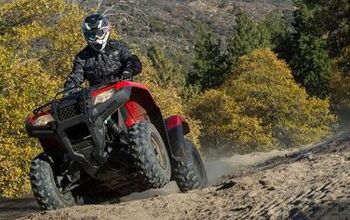Polaris RZR Trail vs. RZR Trail S: By the Numbers
Both the Polaris RZR Trail and RZR Trail S models received a major overhaul for 2021. These two machines have always been the go-to for riders seeking a dose of yee-haw recreation but still need to wend their way through the scattered tight trail (hence why that word appears right in its name, natch).
RZR Trail models are all 50 inches in width, while appending the S to its designation adds an extra 10 inches of breadth. This makes them dandy choices for those seeking tight-quarters maneuverability. It’ll not escape your notice that, for this new model year, these rigs have cribbed more than a few styling cues from their big-brother RZR Turbo siblings.
While the Trail and Trail S share a 79-inch wheelbase, there are plenty of differences beyond the extra width that sets them apart. Let’s take a closer look.
Polaris RZR Trail Premium
The entirety of the RZR Trail lineup is powered by a 900cc-class ProStar engine making 75 horsepower. This 4-stroke twin displaces 875cc and can be equipped with an engine braking system. It is paired with the brand’s PVT gearbox (which really doesn’t have any gears) that permits operation in High or Low ranges.
Meanwhile, the RZR Trail S range of machines has two power options. The entry-level 900 Sport is powered by the same 75-horse ProStar 875cc twin described for the narrower non-S RZR Trail models. Step up to the 1000 Premium and Ultimate trims and one will find the 100-horse ProStar 999cc. Both are paired to the Polaris PVT drive unit with Low and High ranges. All three Trail S models are equipped with an engine braking system to help keep things shiny side up while descending steep grades.
Polaris RZR Trail S Ultimate
All three trims of the Trail model share a 50-inch width and 11 inches of ground clearance, the latter aided by 26-inch PRX tires and 12-inch wheels. Those wheels are steel on the base Sport trim and aluminium on the snazzier Premium and Ultimate trims. A good ten inches of suspension travel, front and rear, await owners of the Trail – no matter the trim – but Sport and Premium models make do with ZF Sachs dampers while the Ultimate packs Fox 2.0 Podium shocks. Everything has dual A-arms with stabilizer bars at both ends.
Stepping up to the Trail S, look for an extra 1.5 inches of clearance compared to the Trail. This is thanks in no small part to bigger Trailmaster A/T tires, measuring 27 inches on 12-inch aluminum wheels. Entry-level Sport trims earn Fox 2.0 Podiums while the Premium and Ultimate enjoy 2-inch Walker Evans needle shocks with 16-position adjustable clickers. While they have the same suspension setup as the Trail, one will find 12.25 inches of travel up front and 13.2 inches out back.
Here, we arrive at the most notable differences between these two brothers. Polaris RZR Trail models measure 110.9 inches long, 50 inches wide, and stand 67.9 inches high. As mentioned, it rides on a 79-inch wheelbase. This gives it a narrow stance, great for squeezing into that woodlot on the Back Forty. Weight ranges from just over 1200lbs to about 1300lbs depending on trim.
Polaris RZR Trail S models, meanwhile, measure 110.9 inches long, 60 inches wide, and are 69.3 inches high. Sharing the 79-inch wheelbase with the Trail makes this option slightly more ‘square’ in its footprint, something one may want to consider for new riders. Polaris has taken great pains to mention they’ve kicked out the doors a bit, adding extra elbow room in the cabin. Loading these things onto a scale reveals the entry level Trail S weighs a hair under 1290lbs, while a loaded Ultimate tips the lights at 1360lbs dry.
These things aren’t strictly built for work like the Ranger line of machines, but the Polaris RZR Trail can get its hands dirty when necessary. Every trim can be fitted with a 1.25” hitch receiver that bears a 1500lb rating. Total payload across the range is 740lbs, with the box itself rated for 300lbs of stuff. If you’re interested, the box measures 20.7 inches long, 37 inches wide, and 7.9 inches deep.
Trail S models can also earn its keep, as it is similarly with the ability to pack a towing hitch good for 1500lbs. Despite its greater mass and greater engine size on its top two trims, payload remains at 740lbs; this suggests a limitation of the chassis, not the power. Box capacity and dimensions are identical to the Trail.
Buying one of these machines no longer means having to make do with derpy styling and the me-too appearance of a little brother. Both the Polaris RZR Trail and Trail S models feature all-new styling that steals more than a few items of clothing from their brother’s closet. Headlights are narrowed and swept back compared to last year’s rig, and the accent lighting around the grille strongly remind us of other RZR models that cost a lot more money.
Ultimate trims of both Trail and Trail S are endowed with the fantastic RideCommand system, a 7-inch touch display that packs a ton of information and works with gloves. Topographic mapping, Bluetooth, in-vehicle comms, and a Rockford Fosgate sound system are all unique to this trim. Elsewhere, the Sport and Premium trims utilize the very detailed dual-sweep analog dials found in more expensive RZR variants. Lighting trades out halogen peepers for LEDs as one moves up the Trail/Trail S pay scale. Electric power steering shows up for duty on Premium and Ultimate trims.
Polaris RZR Trail Ultimate
Polaris RZR Trail Sport, Premium, and Ultimate models are priced at $13,399, $15,499, and $16,999, respectively. Naturally, the company will be more than glad to sell you any number of accessories to jack that price skyward.
Those seeking that extra width will find slightly higher price tags on the Polaris RZR Trail S. However, by making the decision to stick with a 900-class engine in its base trim, the cheapest 60-inch model actually stickers cheaper than two of the three 50 inchers. Look for pricing on $15,299, $17,299, and $18,999 for Trail S models in Sport, Premium, and Ultimate trims, respectively.
Become an ATV.com insider. Get the latest news first by subscribing to our newsletter here.
More by Matthew Guy



